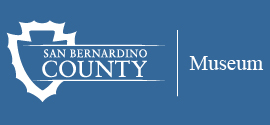 |
|
CONTENT STANDARDS (CA, 2008) ADDRESSED BY THE OCEANS KIT INCLUDE:
(Dependent on subject matter chosen by the educator)
Fourth Grade
Science |
Math |
Language Arts |
(adapt contents for further study)
Life Sciences
2.a plants – food chains
2.b producers/consumers
2.c decomposers recycle
3.a ecosystems
3.b survival of fittest
3.c plant/animal codependency
Investigation, Experimentation
6.b estimate & measure specimens
6.e graph & interpret measures |
(required visual specimens, written information & classroom map use)
Number Sense
1.3 round numbers
1.4 determine when to use rounded numbers
1.5 interpret fractions
1.7 visual fraction relativity
4.1 factoring
4.2 prime numbers
Algebra & Functions
1.1 variable use
1.2 parenthesis use in expressions
1.3 use & interpret formulas
Measurement & Geometry
1.1 perimeter & area
1.4 use p & a formulas
Data Analysis
1.1 graph data
1.2 statistical evaluation
2.1 probability outcomes
Mathematical Reasoning
1.1 relevant/irrelevant, sequencing, patterns
2.1 estimate to verify
2.2 complex problem strategies
2.3 methods for reasoning
2.4 solution expressed logically
2.5 advantage of exact or estimate
2.6 precise calculations
3.3 apply generalizations to other circumstances |
Word Analysis, Vocab
1.2 prior knowledge to decode
1.3 root words
1.4 roots, affixes to analyze meaning
Reading Comprehension
2.1 structural patterns in informational text
2.2 strategies for purpose reading
2.4 evaluate new info
2.5 compare/contrast
2.6 cause & effect
2.7 follow multi-step instructions
Writing
(suggest oral/written report)
1.1 focus, structure, point of view
1.2 multi-paragraph comps.
1.3 traditional structures
1.4 fluid & legible writing
1.5 quote or paraphrase
1.7 reference materials
1.9 basic keyboarding skills
1.10 editing skills
2.3 write information reports
Written & Oral Conventions
1.1-7 write & speak w/skills appropriate to level
Listening, Speaking
1.1-10 comprehension, organization & delivery of orals, analysis of oral media
2.2 informative presentation
2.3 oral summaries |
Fifth Grade
Science |
Math |
Language Arts |
(adapt contents for further study)
Life Sciences
2.c digestive organs
2.e vascular plants
2.f photosynthesis
Earth Sciences
3.b liq. water → vapor
3.d fresh water is limited
4.b weather patterns
Investigation, Experimentation
6.a classify for criteria
6.c plan & conduct investigation
6.f appropriate measuring tools
6.g record & graph data
6.h draw conclusions
6.i write report |
(requires visual specimens, written information & classroom map use)
Number Sense
1.2 percents, decimal, fraction
2.3 simple mixed number work
2.4 fraction multiplication
Algebra & Functions
1.1 graph info to solve problem
1.2 use of variable
Measurement & Geometry
1.1 geometric areas
1.4 units of measure: area, perimeter, volume
Data Analysis
1.1 mean, median, mode
1.3 fractions & percents to compare data
Mathematical Reasoning
1.1 analyze problems
1.2 simplify problems
2.1 estimation
2.2 strategies for complex problems
2.3. variety of methods to explain reasoning
2.4 clear & logical solution
2.5 advantage of exact or estimate
2.6 precise calculations
3.3 apply generalizations to other circumstances |
Word Analysis, Vocab
1.2-4 specialized vocab
Reading Comprehension
2.1 understand text features
2.2 analyze sequential text
2.3 main ideas & concepts
2.5 ID facts, inferences, opinions
Writing
1.3 locate relevant info
1.4 electronic media to create documents
1.6 edit & revise
2.3 research report
(suggest oral/written report)
Written & Oral Conventions
1.1-5 write & speak w/skills appropriate to level
Listening, Speaking
1.1 seek info not already discussed
1.3 inferences based on oral report
1.4-6 organize & deliver oral communication
1.7-8 analyze & evaluate oral, media communications |
Sixth Grade
Science |
Math |
Language Arts |
(adapt contents for further study)
Life Sciences – Ecology
5.a energy transfer in food webs
5.c populations by web functions
5.d similar ecological roles
5.e carrying capacity
Earth Sciences
1.f plate tectonics to Earth features
2.d geologic events change habitat
4.a sun major energy source
Investigation, Experimentation
7. a-e scientific method
7.f interpret topo, geologic map
7.h change to nat’l phenomena |
(requires visual specimens, written information, research)
Number Sense
1.2 ratio use to show relative quantities
1.4 percentage of quantities
Algebra & Functions
1.2 multi-variable expression
2.1 measurement conversion
Measurement & Geometry
1.3 formulas for volume
Data Analysis
1.1 mean, median, mode
1.3 outlier affects measures of central tendency
1.4 central tendency measure - useful info
2.1-5 analyze statistical data
3.1 outcomes, possible events
3.5 in- & dependent events
Mathematical Reasoning
1.1 analyze problems
1.2 formulate conjectures
2.1 estimation to verify calcs.
2.2 strategy to complex probs.
2.4 variety methods to explain math. reasoning
2.6 advantages of exact or approximate
2.7 precise calculations |
Word Analysis, Vocab
1.2-3 specialized vocab
Reading Comprehension
2.3 main idea connection
2.4 clarification tools
2.5 multi-step instructions
Writing
1.3 organizational patterns
1.5 formatting
1.6 revise to improve
2.2a-d expository compositions
2.3a-c research reports
(suggest oral/written report)
Written & Oral Conventions
1.1-5 write & speak w/skills appropriate to level
Listening, Speaking
1.1-3 comprehension
1.4-7 organization & delivery of orals
1.8-9 analysis & evaluation
2.2 informative presentation |
Seventh Grade
Science |
Math |
Language Arts |
(components used to augment text)
Life Sciences
2.a life cycle, reproduction
3.1 environ factors → diversity
3.2 natural selection
3.4 concept mapping, specimens
3.5 environmental changes → adaptation or extinction
5.a-g structure & function of living organisms
Earth Sciences
4.f plate movement affects organism survival
4.g explain geologic time scale plant & animal changes
Investigation, Experimentation
7.a appropriate tool use
7.b variety resources for research
7.c written scientific method
7.d scale models
7.e reports: written & oral |
(requires visual specimens, written information, research)
Number Sense
1.6 % increase, decrease
2.1 exponents
Algebra & Functions
1.5 graph quantitative relationships
Measurement & Geometry
1.1 compare measures between systems
2.1 formulas for area, perimeters
3.2 use coordinate graphs
Data Analysis
1.1 data set display
Mathematical Reasoning
2.1 estimation to verify calcs.
2.2 strategy for complex probs.
2.4 make/test conjectures
2.5 variety of methods to explain reasoning
2.7 advantage of exact or approximate
2.8 precise calculations
3.1-3 apply strategies to new problems |
Word Analysis, Vocab
1.2-3 specialized vocab
Reading Comprehension
2.1 analyze diff in structure & purpose
2.2 locate information
2.3 analyze for cause & effect
2.6 assess evidence to support claims
Writing
1.1-3 organization & focus
1.4-6 research & technology
1.7 revise to clarify
2.3a-d write research report
(suggest oral/written report)
Written & Oral Conventions
1.1-7 write & speak w/skills appropriate to level
Listening, Speaking
1.1-3 comprehension
1.4-6 organization & delivery of orals
1.7-8 analysis & evaluation
2.3a-d research presentation |
Eighth Grade
Science |
Math |
Language Arts |
(components used to augment text)
Physical Sciences
6.a carbon chemistry
6.b elements in living things
Investigation, Experimentation
9.a conduct experiment
9.b evaluate data
9.c variable & controlled parameters
9.e graph construction |
(requires visual specimens, written information, research)
Number Sense
1.6 % increase, decrease
2.1 exponents
Algebra & Functions
1.5 graph quantitative relationships
Measurement & Geometry
1.1 compare measures between systems
2.1 formulas for area, perimeters
3.2 use coordinate graphs
Data Analysis
1.1 data set display
Mathematical Reasoning
2.1 estimation to verify calcs.
2.2 strategy for complex probs.
2.4 make/test conjectures
2.5 variety of methods to explain reasoning
2.7 advantage of exact or approximate
2.8 precise calculations
3.1-3 apply strategies to new problems |
Word Analysis, Vocab
1.3 verify meanings with context techniques
Reading Comprehension
2.6 variety of researched information
2.7 expository critique
Writing
1.1-3 organization & focus
1.4-6 research & technology
1.7 evaluation & revision
2.3a-d write research report
(suggest oral/written report)
Written & Oral Conventions
1.1-6 write & speak w/skills appropriate to level
Listening, Speaking
1.2 purpose, point of view
1.3-7 organization & delivery of orals
1.8-9 analysis & evaluation
2.3a-d research presentation |
|
|
 |
|
|



![]()